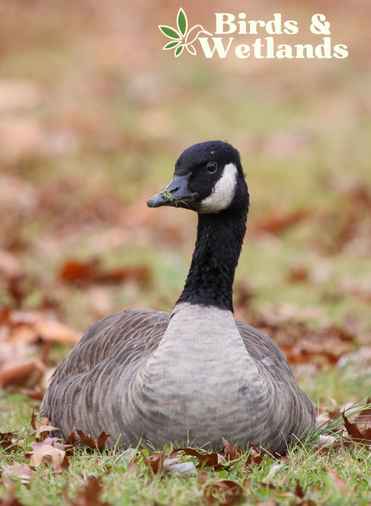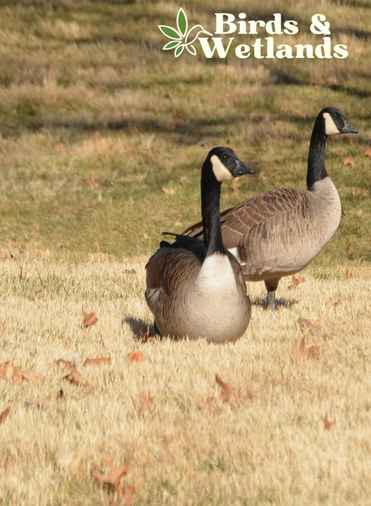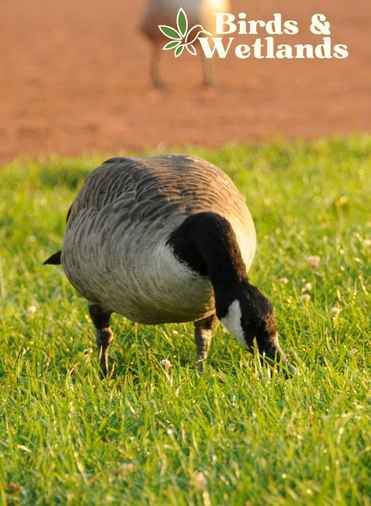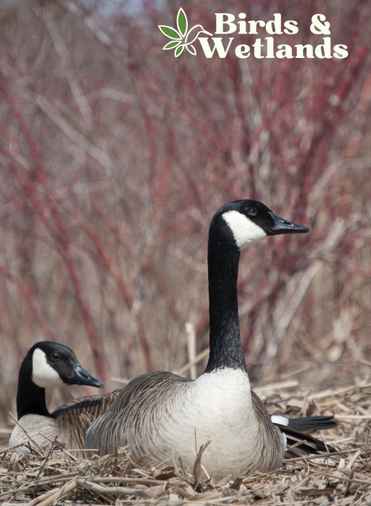The Aleutian Islands of Alaska are located between Alaska and Russia in the northwestern corner of the state. With a long and varied landscape that spans miles of coastline, mountains, valleys, woodlands, and tundra, these islands have a climate characterized by strong winds and heavy rainfall.
In this post, we will take a closer look at the Aleutian cackling goose and other geese species that breed in the Aleutian Islands of Alaska.
Key Points
Aleutian geese have white neck rings, white cheek patches, black tail feathers and mottled brown plumage.
These geese were once considered extinct but thanks to various conservation efforts, their populations bounced back and they were removed from the endangered list in 2001.
Besides the Aleutian cackling goose, snow geese and Canada geese are among the other geese that breed in the Aleutian.
What are Aleutian cackling geese?
The Aleutian cackling goose (Branta canadensis leucopareia) is a medium-sized, dark-colored goose with blackish plumage and white cheeks. Although it is native to the Aleutian Islands of Alaska, this particular subspecies is known for its spring migrations and can be found in multiple locations throughout western North America.
Its relatively small size compared to other variants of the cackling goose earned its other name, the “Alaskan cackling goose.”
In addition to their distinctive appearance and distribution, Aleutian cackling geese are known for their high-pitched honking sounds and animated gregariousness.
Often found in large flocks, these geese are an important part of local ecosystems and a food source for many other animals.
Interestingly, all cackling geese were combined previously as a single species with the Canada goose.

What do Aleutian cackling geese look like?
Aleutian cackling geese are one of North America’s smallest species of goose. They have a compact body structure, with round heads, short necks, and tails. Their bodies are typically black, with white cheek patches, legs, feet, and black tail feathers. With their grayish brown wings, backs, and white rump, these geese can be easily identified from above. On land, they also stand out thanks to the conspicuous white neck ring located at the base of their neck. Except for the neck ring, which was always wide and white in the few attested specimens, the westernmost population did not appreciably differ in color. They lack the purplish or brownish cast of the small cackling geese. Additionally, the small cackling goose is smaller than the Aleutian goose and has dark breast color. The Taverner’s cackling goose has a lighter breast color and is slightly larger.

What do Aleutian geese eat?
Aleutian geese are omnivores but they primarily feed on plant material. Occasionally, they will submerge their head in the water while searching for fish, insects and mollusks. On some occasions, they are seen grazing for grains and seeds on agricultural lands and marshes.

Can Aleutian cackling goose fly?
Yes, Aleutian geese are capable of flying, especially during migration. These small waterfowl have long, slender bodies built for quick and agile movements. Their strong wings and curved beaks allow them to easily navigate the air, propelling themselves through the sky and gliding effortlessly from place to place. And unlike other birds that migrate long distances, cackling geese can remain in flight for relatively long periods.
Where do Aleutian geese spend winters?
Each year, Aleutian geese travel thousands of miles from their summer breeding grounds up north to find a comfortable place to spend the winter. While different populations tend to winter in other regions, the most common destinations include the Pacific Northwest, California’s Central Valley, and the southern Great Plains.

Where do Aleutian geese build their nests?
Aleutian geese usually build their nests on south-facing turf slopes above rocky shorelines. Every year, they return to the same nesting sites. The female lays 4 to 6 eggs and incubates them for 25 to 27 days. After a day or two from hatching, the parents will guide their goslings out of the nest and into the water.
What is the Aleutian goose’s nest made out of?
Their nest is usually made of soft plant materials such as grasses, weeds, reeds and lined with down feathers plucked straight out of the female’s chest.

Why were Aleutian Canada geese endangered in the past?
The Aleutian Canada goose was a rare and endangered bird in the past. The main reason for this was predation by foxes, which often hunted and killed the geese in large numbers. But this was not the only threat that they faced.
They were also threatened by Russian fur traders, who would often hunt them for their valuable feathers, prized for use in hats and other clothing items. Because of these dangers, the Aleutian goose population dwindled drastically over many years.
They were even considered extinct until a breeding colony was discovered on Buldir Island in 1962.
Some Aleutian geese were bred in captivity but releasing captive birds in the wild was halted due to low survival rates.
Why are Aleutian Canada geese endangered?
The Aleutian cackling goose is not currently endangered. In fact, it was removed from the threatened and endangered species list in 2001. This recovery can be largely attributed to the elimination of the introduced Arctic foxes that preyed on these birds. Since this primary threat was eradicated in the late 1960s, nesting populations have flourished again. Not only have these birds made a remarkable comeback, but their status has been upgraded from ‘endangered’ to ‘threatened’ since 1990.

What other geese breed in the Aleutian Islands?
While some species of geese do indeed breed in the Aleutian, others are migratory and travel to other locations during the spring and summer months. For example, a small number of snow geese can often be found in coastal areas during the late spring and early summer, when they mate and build their nests. Other species, such as Canada geese (also called white-cheeked geese) and Brant geese, tend to migrate farther south for the breeding season.

